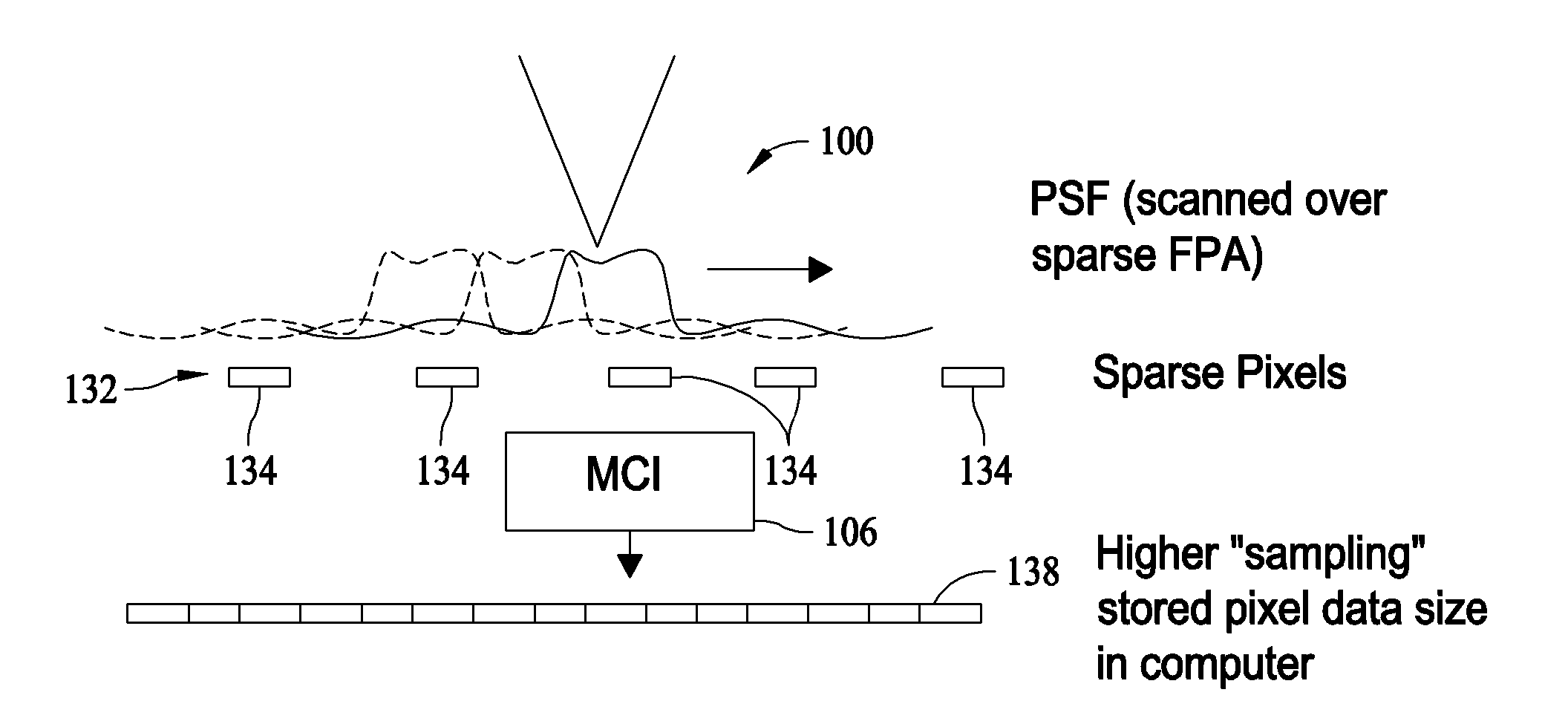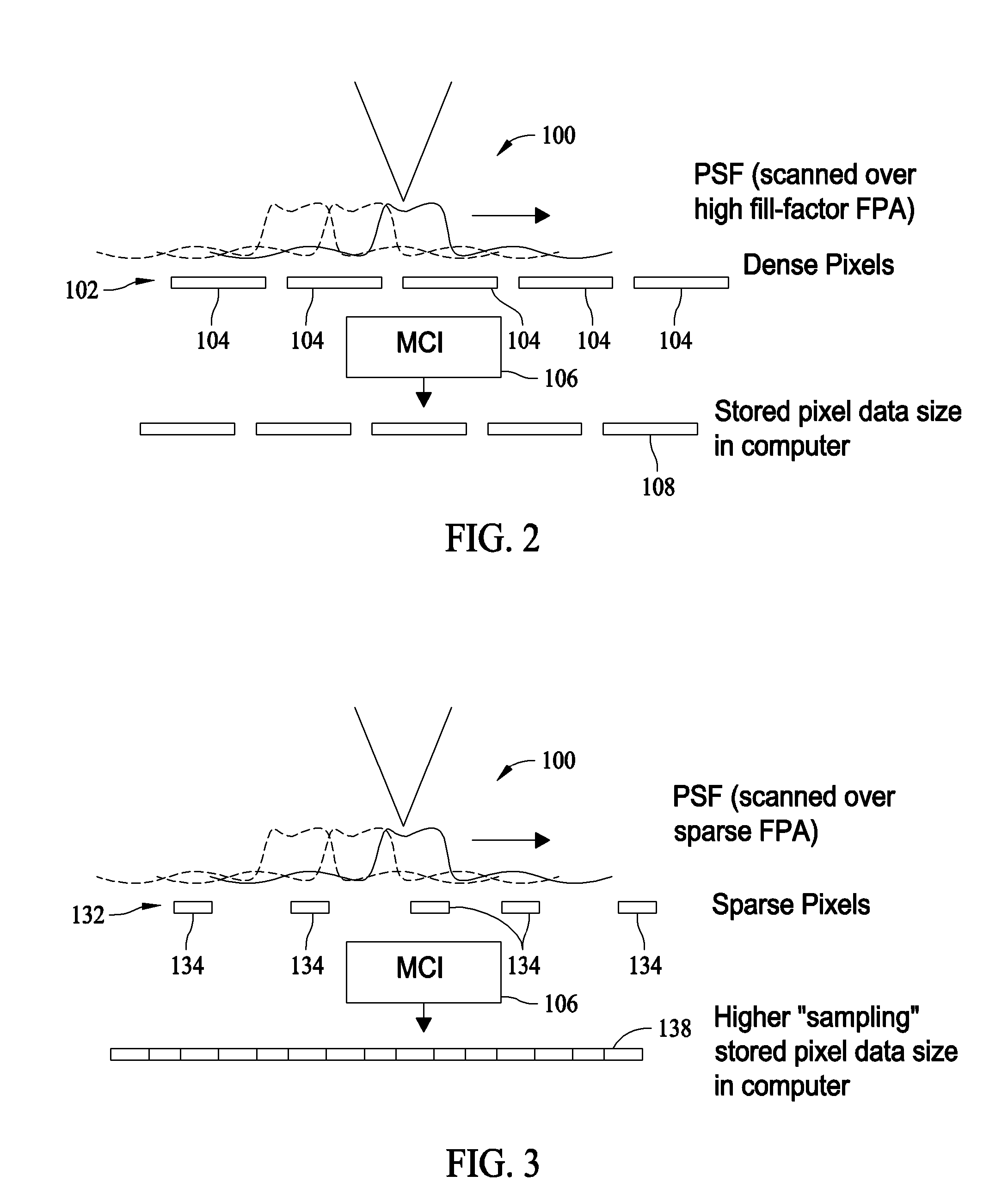Methods and systems for improving resolution of a digitally stabilized image
a technology of digital stabilized images and resolution, applied in the field of digital image resolution, can solve the problems of image quality adversely affected, image quality is affected, and the sharpness of the picture is limited by one or more, so as to improve the quality of images acquired, reduce the effective area of a plurality, and improve the resolution
- Summary
- Abstract
- Description
- Claims
- Application Information
AI Technical Summary
Benefits of technology
Problems solved by technology
Method used
Image
Examples
Embodiment Construction
[0017]FIG. 1 is a diagram illustrating one embodiment of a motion compensated integration system 10 [10 not on FIG. 1—apparently shown as the second 18] that includes an optical sensor using a camera 11 having a focal plane array (“FPA”) 12 fixedly mounted to a moving platform 14. In various embodiments, the moving platform 14 is one of an interceptor missile that operates in outer space, a satellite, a space vehicle, an air vehicle, an aircraft, a ground vehicle, and watercraft.
[0018]Data received by FPA 12 is directed to a motion compensated integration (“MCI”) processor 16. Also mounted on the moving platform 14 is an inertial measurement unit (“IMU”) 18, which sends optical sensor line-of-sight movement data from a triad of gyroscopes (not shown) to the MCI processor 16. Due to the camera 11 and FPA 12 being fixedly mounted to the moving platform 14, the illustrated embodiment does not include position compensating devices, such as scan mirrors, gimbals, and position pickoffs, b...
PUM
 Login to View More
Login to View More Abstract
Description
Claims
Application Information
 Login to View More
Login to View More - R&D
- Intellectual Property
- Life Sciences
- Materials
- Tech Scout
- Unparalleled Data Quality
- Higher Quality Content
- 60% Fewer Hallucinations
Browse by: Latest US Patents, China's latest patents, Technical Efficacy Thesaurus, Application Domain, Technology Topic, Popular Technical Reports.
© 2025 PatSnap. All rights reserved.Legal|Privacy policy|Modern Slavery Act Transparency Statement|Sitemap|About US| Contact US: help@patsnap.com



